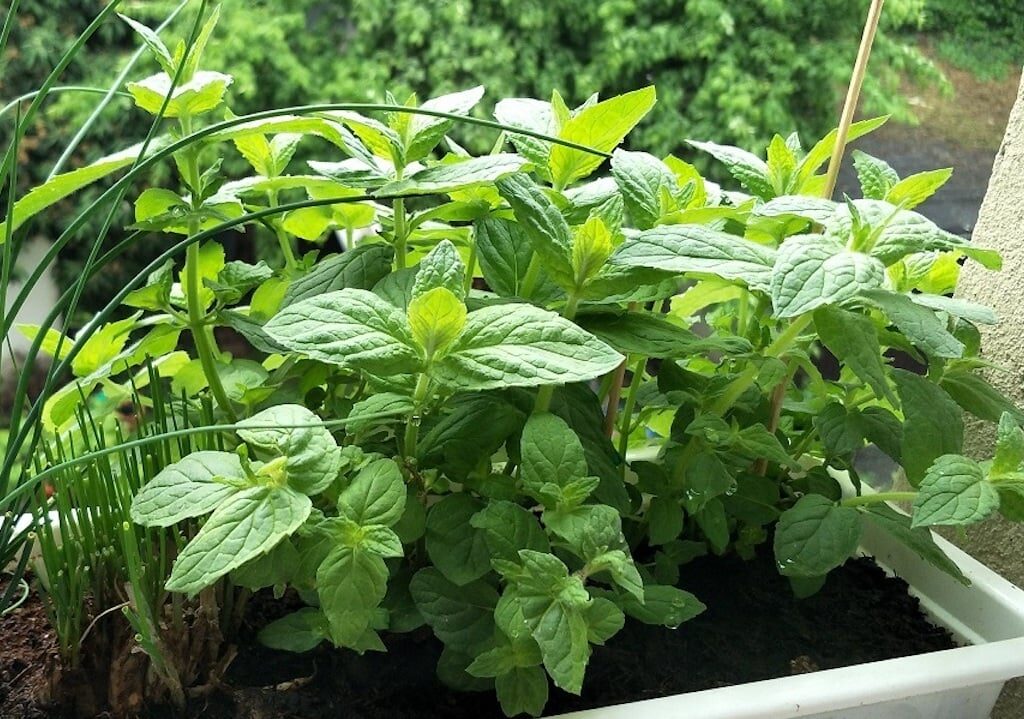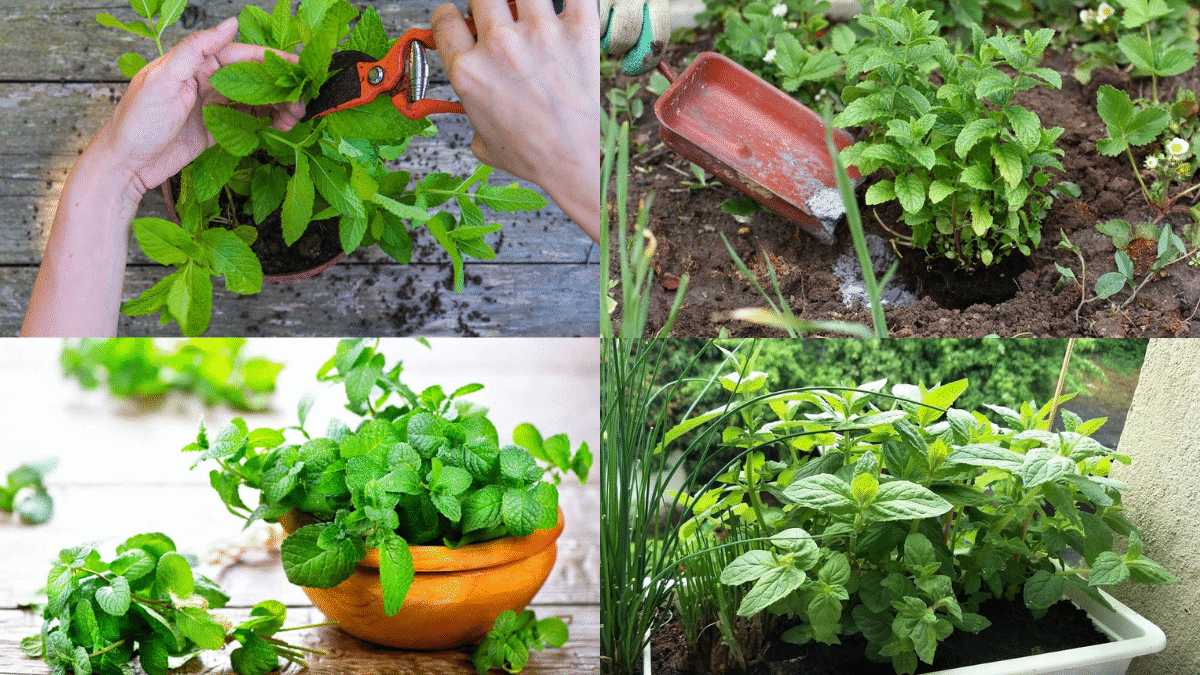Nothing beats the invigorating scent and flavor of fresh peppermint leaves. Whether you’re adding them to a cup of tea, tossing them into a salad, or using them as a garnish for desserts, peppermint is a must-have herb in any garden. The good news? It’s incredibly easy to grow, whether in your backyard, balcony, or kitchen windowsill.
In this article, we’ll guide you through how to plant peppermint, where to grow it, how to care for it, and tips to keep it thriving for a lush, aromatic herb garden.

Why Grow Peppermint?
Before we dive into planting tips, let’s talk about why peppermint deserves a spot in your herb garden.
- Versatile culinary uses: From teas to sauces, desserts, and cocktails.
- Natural pest repellent: Its strong aroma keeps ants, mosquitoes, and mice away.
- Easy to grow and propagate: Perfect for beginner gardeners.
- Medicinal benefits: Traditionally used to soothe digestion, headaches, and congestion.
- Beautiful greenery: Lush, bright green leaves with a refreshing scent.
Understanding Peppermint: A Quick Overview
Scientific name: Mentha × piperita
Plant type: Perennial herb
Growing zones: USDA 3–11 (best as an annual in hotter climates)
Preferred light: Full sun to partial shade
Soil preference: Rich, moist, and well-draining soil
Peppermint is a fast-growing hybrid of watermint and spearmint. Known for its spreading nature, it can quickly overtake garden beds if left unchecked — so strategic planting is essential.

When and Where to Plant Peppermint
Best Time to Plant
- Spring is ideal, after the last frost.
- In warmer zones, you can plant in fall for a winter harvest.
Where to Plant
Peppermint loves:
- Bright, indirect light or partial shade — it thrives in 4–6 hours of sunlight.
- Cooler, moist environments, similar to its native woodland habitat.
Important Tip:
Peppermint can become invasive in garden beds, so it’s best to plant it:
- In a container
- In a bottomless buried pot
- In a designated, isolated garden spot
How to Plant Peppermint: Step-by-Step
Planting Peppermint from Seed
While peppermint can be grown from seed, it’s often unpredictable due to cross-pollination. Still, if you’re up for it:
You’ll need:
- Peppermint seeds
- Seed starting tray or small pots
- Seed starting mix
- Plastic wrap or humidity dome
Steps:
- Fill trays with seed starting mix.
- Sprinkle seeds on the surface and lightly cover with a fine layer of soil.
- Mist with water to moisten.
- Cover with plastic wrap to retain moisture.
- Place in a warm, bright area (65–70°F).
- Keep soil consistently moist.
- Germination takes 10–16 days.
Once seedlings have a few leaves, thin them out and transplant the strongest into larger pots or garden beds.
Planting Peppermint from Cuttings
This is the easiest and quickest method.
You’ll need:
- Healthy peppermint stems (4–6 inches)
- A glass of water
- Pot or garden spot
- Well-draining soil
Steps:
- Cut a healthy stem just below a leaf node.
- Remove lower leaves, leaving the top 2–3.
- Place the cutting in a glass of water.
- Set in a bright, indirect light location.
- Change the water every 2 days.
- In 7–14 days, roots will develop.
- Transplant into soil once roots are 1–2 inches long.
Planting Peppermint in the Ground or Containers
Soil Preparation:
- Use loamy, well-draining soil, enriched with compost.
- Ideal pH: 6.0–7.0
Spacing:
- Plant 18–24 inches apart if in garden beds.
- Containers should be at least 12 inches wide.
Planting Steps:
- Dig a hole slightly larger than the root ball.
- Place the peppermint plant in the hole.
- Fill with soil, pressing gently around the base.
- Water thoroughly.

Peppermint Plant Care Guide
Watering
Peppermint loves moisture but hates soggy soil.
- Water regularly to keep the soil consistently moist.
- Increase frequency during dry, hot weather.
- Water at the base to avoid wetting leaves.
Light
- Prefers 4–6 hours of sun daily.
- In very hot climates, offer afternoon shade.
Fertilizing
- Feed with a balanced, water-soluble fertilizer every 4–6 weeks.
- Avoid over-fertilizing — it can reduce the plant’s aroma.
Pruning
- Regularly trim back stems to encourage bushy growth.
- Remove flowers to keep flavor-rich leaves.
- Harvest by pinching off the top 1/3 of the stem.
Managing Peppermint’s Spreading Habit
Peppermint spreads aggressively via underground runners. To control it:
- Grow in containers to contain roots.
- If planting in a garden bed, bury a bottomless pot into the ground to limit spread.
- Regularly trim runners to keep it in check.
Harvesting Peppermint
When to Harvest:
- Start harvesting once plants reach 6–8 inches tall.
- Best flavor is before flowering.
How to Harvest:
- Use sharp scissors to snip off leaves or stems.
- Don’t remove more than 1/3 of the plant at a time.
Preserving Your Harvest:
- Dry leaves in a shaded, airy spot.
- Freeze leaves in ice cube trays with water.
- Store fresh leaves in a sealed plastic bag in the fridge for up to a week.

Common Pests and Problems
Pests:
- Aphids, spider mites, whiteflies
Solution:
Use neem oil spray or insecticidal soap. Keep the area weed-free and check leaves regularly.
Diseases:
- Root rot (from overwatering)
- Rust fungus (orange spots on leaves)
Solution:
Ensure good air circulation and avoid overhead watering.
Fun Peppermint Garden Ideas
- Plant peppermint near patios to naturally deter mosquitoes.
- Use peppermint in a herb spiral garden alongside basil, oregano, and thyme.
- Place potted peppermint near doorways or windows for a refreshing scent and pest deterrent.
Final Thoughts
Planting peppermint is one of the easiest and most rewarding ways to enhance your herb garden. Its refreshing scent, culinary versatility, and natural pest-repellent properties make it a garden favorite. With simple planting and care steps, you can enjoy a continuous supply of lush, aromatic leaves for teas, recipes, and natural home remedies.
So whether you’re a seasoned gardener or a beginner, give peppermint a try — your garden (and taste buds) will thank you!





Leave A Comment